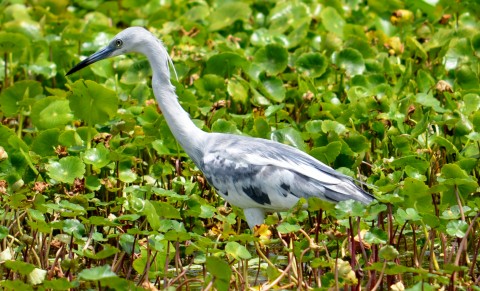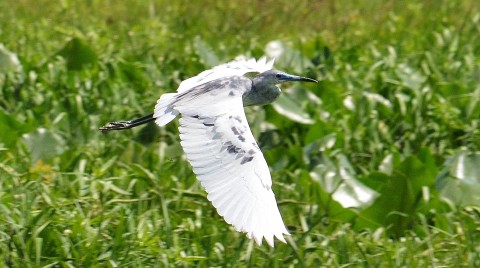When It's a Calico Heron, That's When!
Last week, I posted about the differences between little blue herons and tricolored herons, but the post didn't go into nearly enough detail on either of these two wonderful birds. For one thing, I never even mentioned the basic statistics on size, wingspan, nesting habits, and range of either bird. Today, I'm going to rectify that with more information on the Little Blue Heron. And yep, that's one above, even though last week's post showed little blues looking like this:
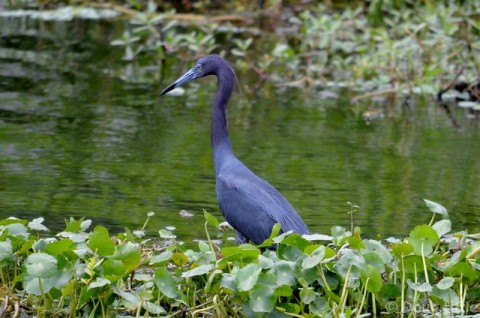
Adult Little Blue Heron
The truth is, though little blue herons end up a solid, slate blue, with a purplish cast to the neck, just like the picture above, they start out white. Yep. The bird in this next photo is also a little blue heron, but in juvenile plumage.
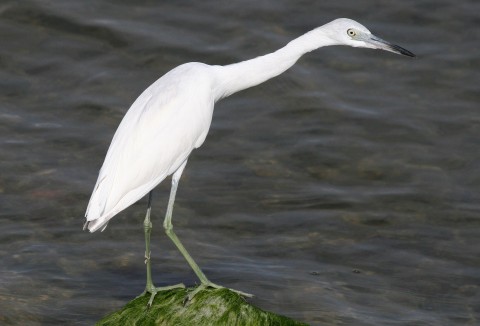
Immature Little Blue Heron
When little blue herons fledge (leave the nest), they are solid white birds, which means they are often misidentified as snowy egrets or cattle egrets. Only their smaller size keeps them from being pointed out as great egrets, as well. But if you look closely, you see immature little blue herons have greenish yellow legs, and blue-grey beaks with a dark tip. Snowy egrets have black legs with golden yellow feet and black beaks, and cattle egrets, which are usually seen in fields and pastures rather than wading along the water's edge, have bright yellow legs and beaks.
As you might imagine, if the bird starts off white, and ends up dark blue-grey, there must be an intermediate period to get from this: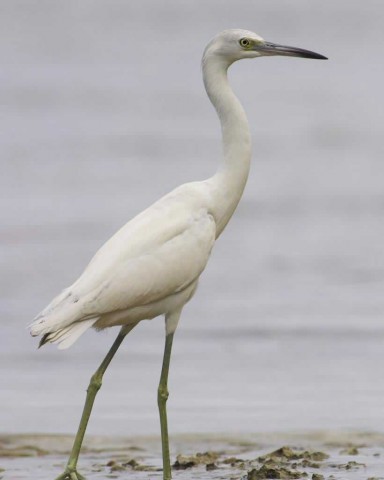
Juvenile Little Blue Heron
To this: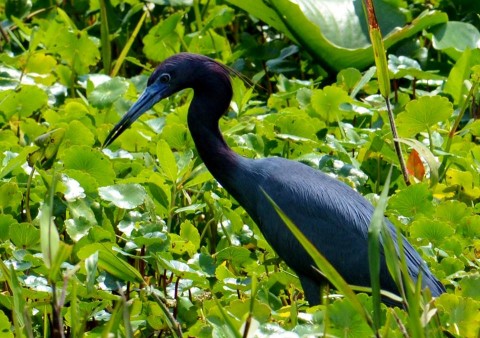 Adult Little Blue Heron
Adult Little Blue Heron
Et voila! Here it is!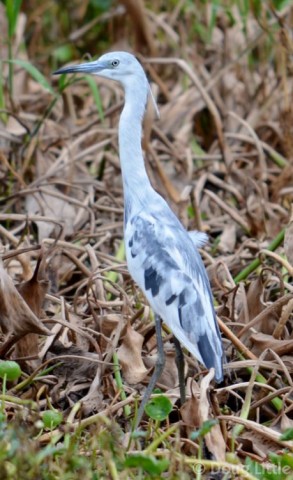
A Juvenile Little Blue Heron Molting from Juvenile to Adult Plumage
(This is the stage when they are often called calico herons, for obvious reasons.)
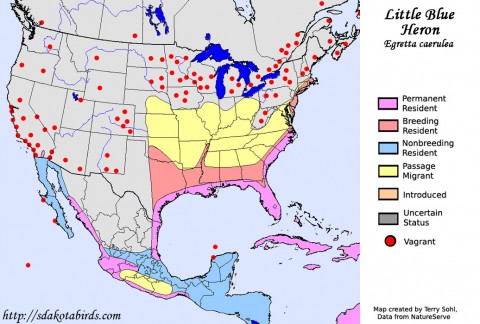
Little Blue Heron Range Map
As you can see, the little blue heron is a wide-spread bird, and breeds throughout large portions of the southeastern United States. They are very common birds, with no current population issues, which means birders have a good chance of spotting them any time they are on or near freshwater ponds, lakes, marshes, swamps, and rivers. They are sometimes found on marine coastlines, as well. So, if you want to add this bird to your life list, you probably won't have to go to any great lengths to find adult specimens. And the white juvenile birds are often easy to spot, as well. But if you're hoping to photograph them in the calico stage, you might have to hunt a little longer, and at the right time of year. It's an in-between stage, after all, and doesn't last forever. As you can see in the next photo, the blue gray adult plumage on this bird is definitely taking over from the white. Won't be long before it looks just like mom and dad.
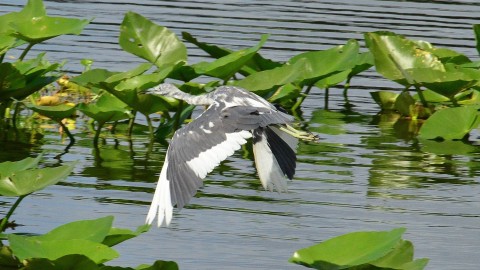
A collective of herons is known as a battery, a hedge, a pose, a rookery, and a scattering. Take your pick. I'm hedging my bets with "hedge."
Little blue herons are medium sized waders, standing about 2 feet tall, with a wingspan of around 40 inches. I mentioned in last week's post that they eat a variety of fish, insects, and various other invertebrates, including crayfish, like the one below.
These birds are colony nesters, quite happy to join other egrets and herons, including cattle egrets, which is interesting, because those are not even native to North America. Little blues lay as many as six pale, blue green eggs at a time, which they incubate for 22 to 24 days, before the eggs hatch into some rather scruffy chicks, sporting some seriously punkish spiked "hair." From this . . .
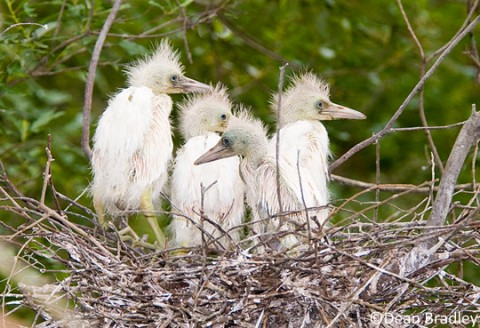
To this . . .
. . . and this . . .
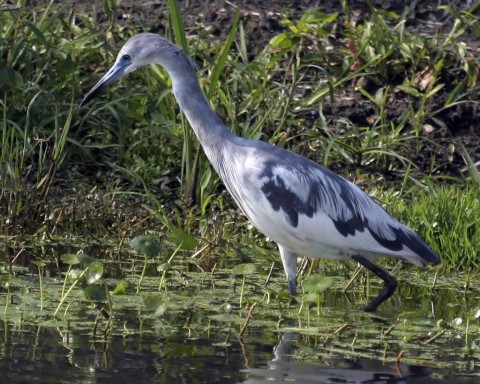
and finally, THIS!
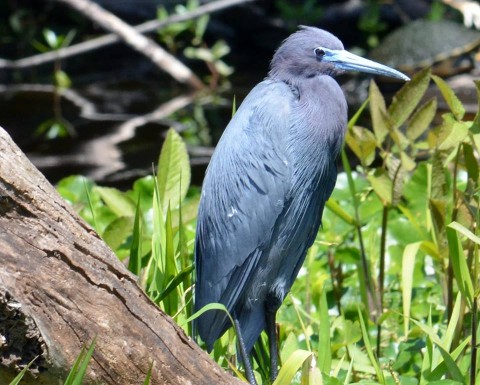
Adult Little Blue Heron
And there you have this week's post, folks. Hope you enjoyed learning a bit more about this common, but very beautiful, heron. Keep your eyes open when out on the rivers and lakes, and maybe you'll spot that equally beautiful, in-between stage, known as the calico heron.
~~~
Next Week: Something Reptilian This Way Comes!
(My apologies to Ray Bradbury)
See you then!
